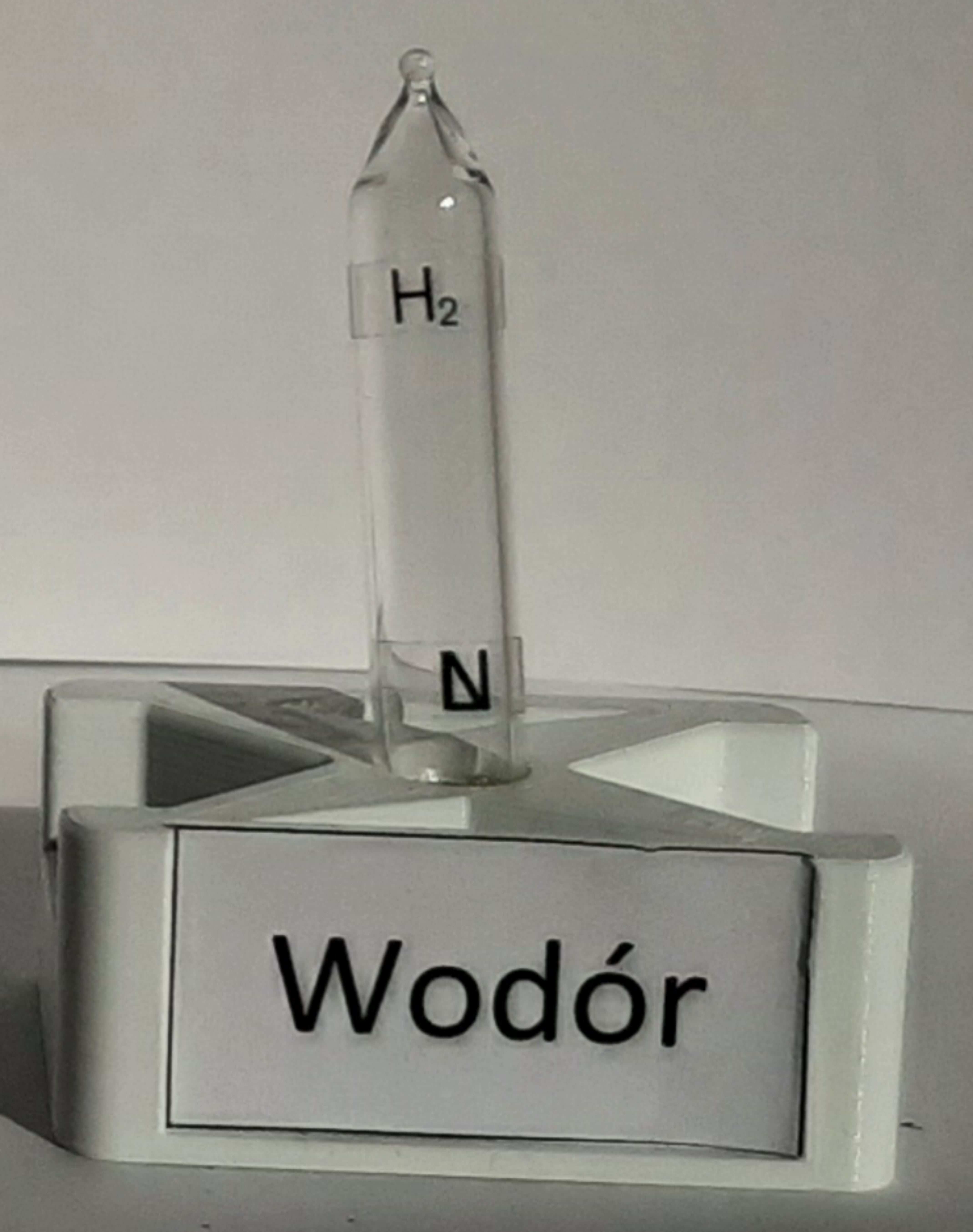
Hydrogen (from Latin Hydrogenium) H
Goethite (occurrence: Germany, Great Britain, Czech Republic), kaolinite (China, USA, Germany, in Poland we can find this mineral in Lower Silesia), muscovite (India, Russia, Canada, in Poland near Strzegom, Dzierżoniów), pyrophyllite (Congo, Angola, Morocco, in Poland in the Świętokrzyskie Mountains).
A colorless and odorless gas, it is the lightest and simplest chemical element in the periodic table, having only one proton and one electron in its atom. Hydrogen is very chemically reactive and forms numerous chemical compounds. It comes in three allotropic varieties: protium, deuterium and tritium. It has strong reducing properties and is flammable: forms an explosive mixture with oxygen. Slightly soluble in water.
HCl, H2O, H2, NH3, PH3, CH4, H2S, H2SO4, HNO3
About half of the hydrogen produced is obtained from natural gas (steam reforming, semi-combustion and autothermal reforming technologies), one third from liquid hydrocarbon fuels, one fifth from coal, and only 4 percent is obtained by electrolysis of water. In this process, pure water is electrolyzed using electric current. During electrolysis, water is split into hydrogen and oxygen, with the former being collected at the cathode. Hydrogen can also be released from aqueous solutions by the reaction of metals with water or acids. For example, metallic zinc can react with hydrosulfuric acid to release hydrogen. Hydrogen can be obtained using light radiation in the process of water photolysis, where sunlight is used to break down water molecules into hydrogen and oxygen, a process used in photosynthesis in plants. Depending on the hydrogen production technology and the associated CO2 emissions into the atmosphere, the conventional color spectra of hydrogen may be e.g. green, gray, blue, or even turquoise or pink.
Hydrogen is currently used to produce fuels (50%), fertilizers (43%) and in numerous technological processes (6%), such as the production of glass and steel and for the production of various food products, such as margarine. Hydrogen is a key raw material for the synthesis of ammonia (NH3). Ammonia is used in the fertilizer and chemical industries. Hydrogen is necessary for the production of methanol (CH3OH), which is used as a fuel or chemical solvent. Hydrogen is used as a fuel in fuel cells, which convert chemical energy into electrical and thermal energy. Hydrogen can be used in wastewater treatment processes, where it can serve as an energy source for the reduction of organic compounds.
The United States is one of the largest hydrogen producers in the world, and Japan and China are also production leaders. Germany, South Korea, France and Australia also make a significant contribution to hydrogen production.
Hydrogen is potentially one of the most effective energy carriers, due to its energy efficiency and lack of carbon dioxide emissions during combustion. Hydrogen is created in the process of thermonuclear fusion in the interior of stars, including the Sun, where, as a result of the combination of protons, hydrogen is converted into helium. Due to its small size, hydrogen is one of the few elements that can penetrate through micro-gaps and crevices in the material, which is called the hydrogen effect. Hydrogen, when produced using renewable energy, can help reduce greenhouse gas emissions, increase energy independence and mitigate the challenges associated with the variability and intermittency of renewable energy systems. By 2050, hydrogen may account for nearly 1/5 of total final energy consumption. This would reduce annual carbon dioxide emissions by roughly 6 gigatons compared to today's technologies.


